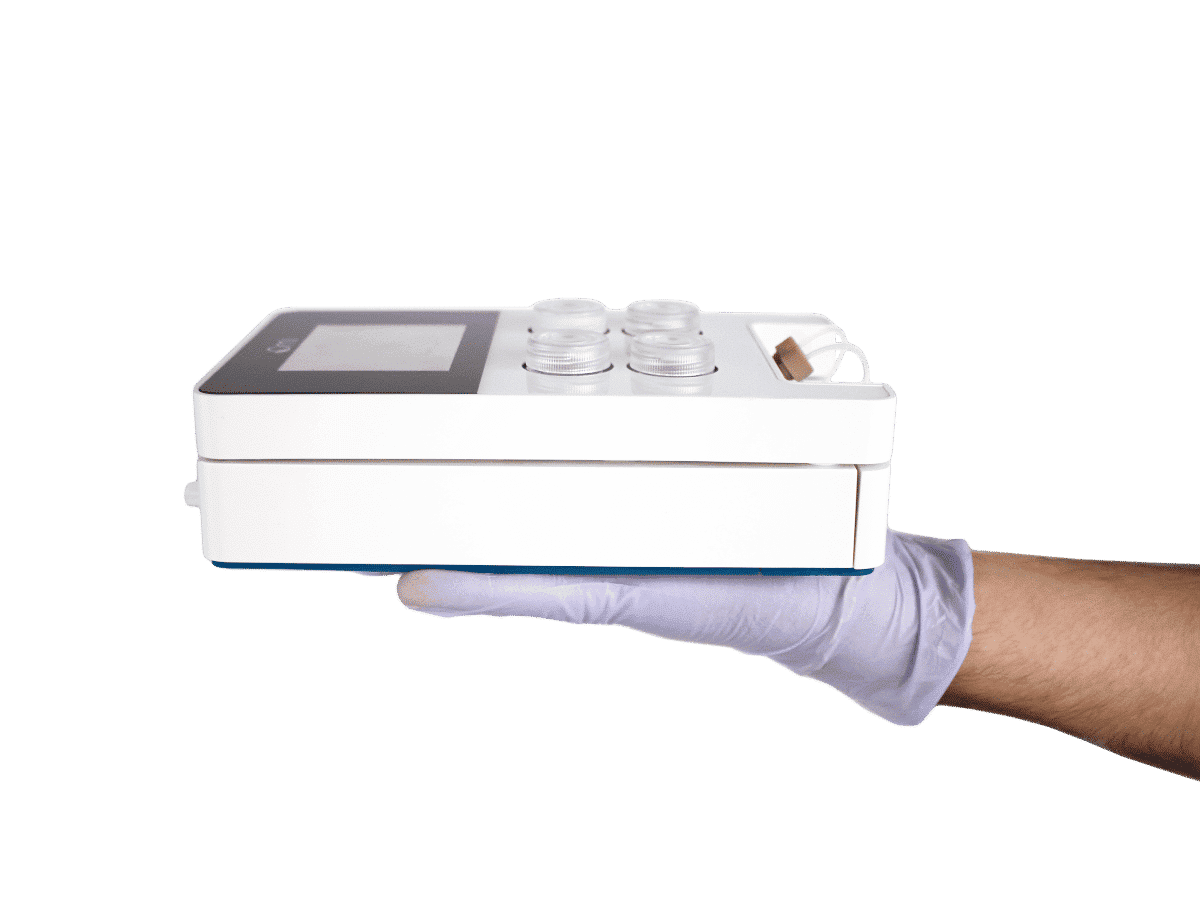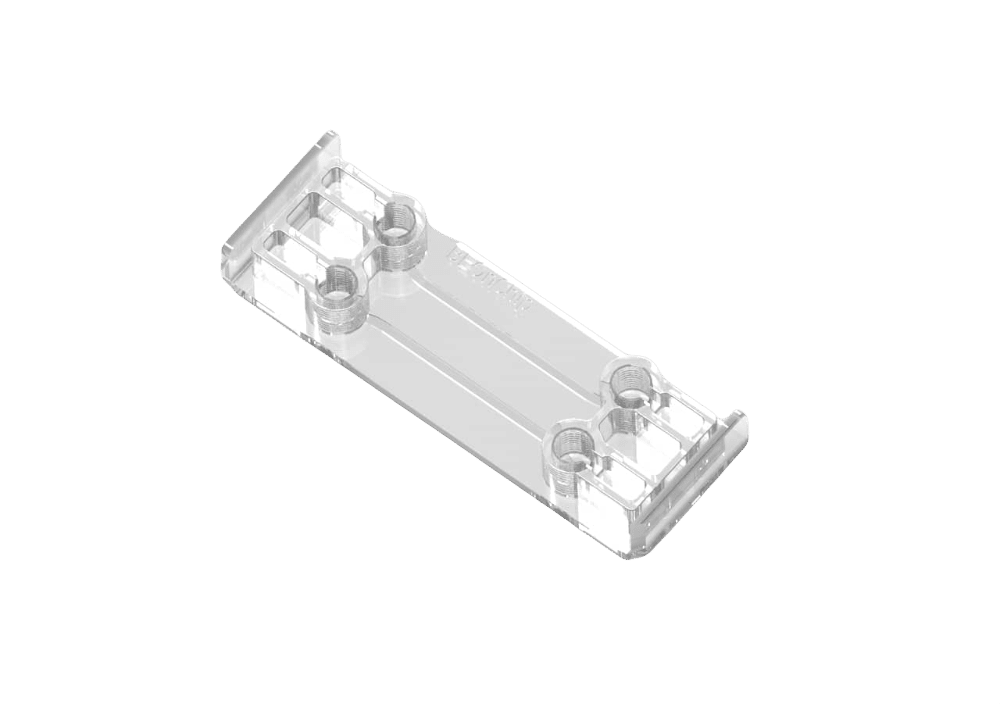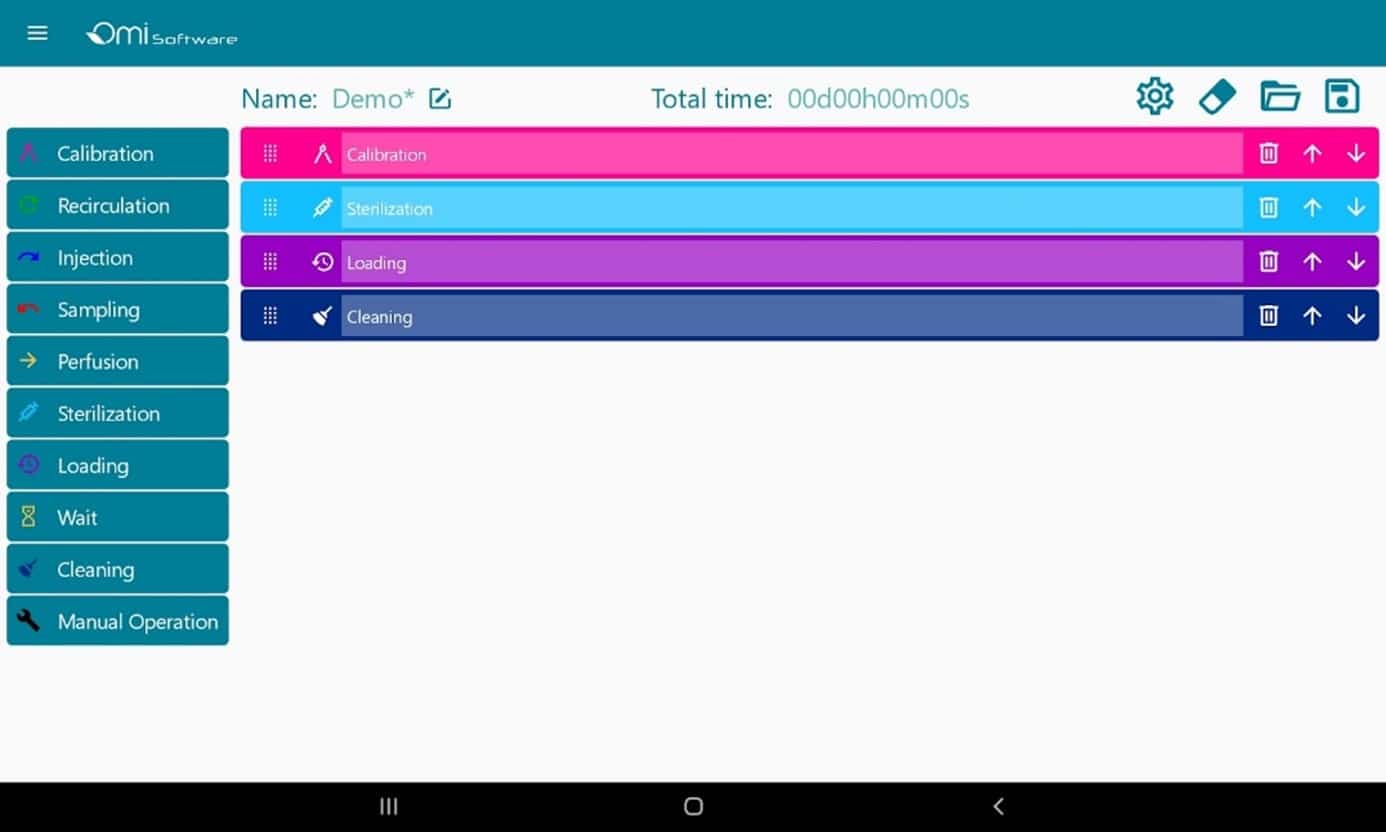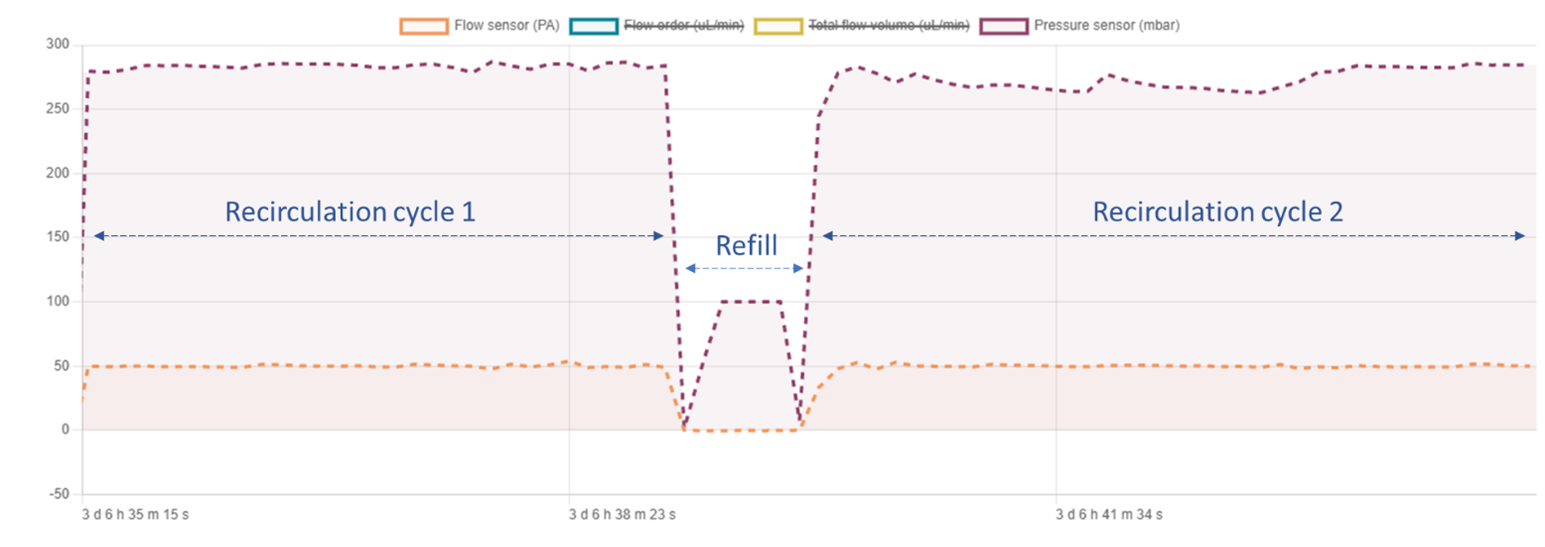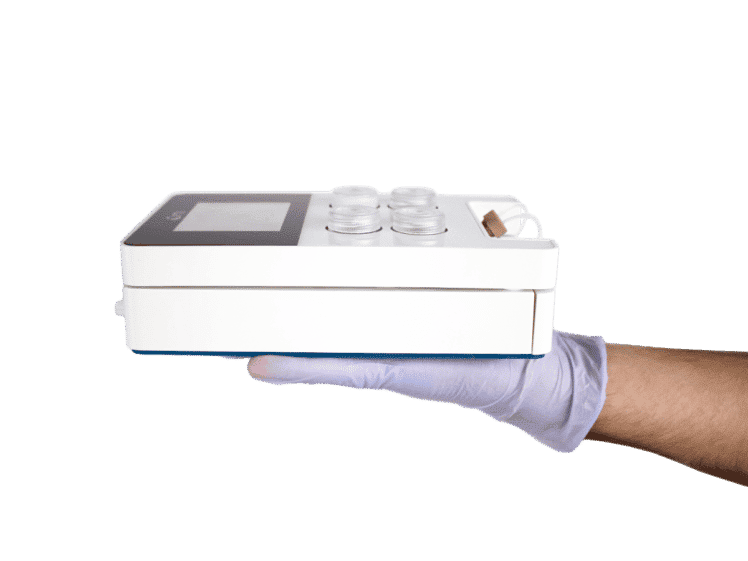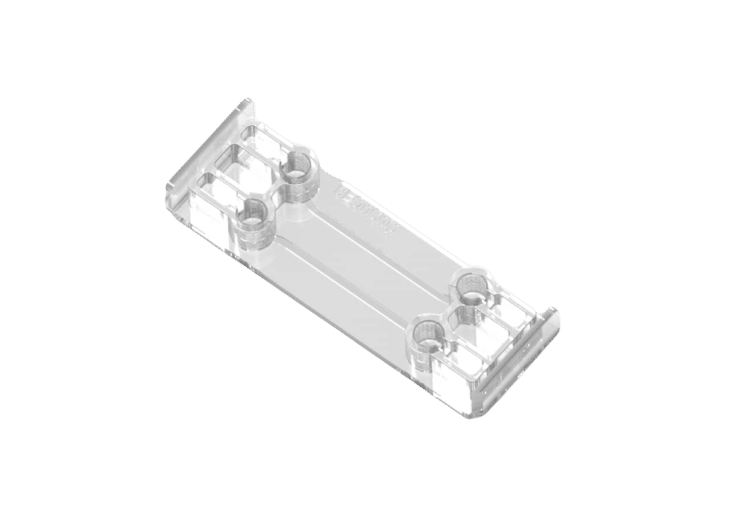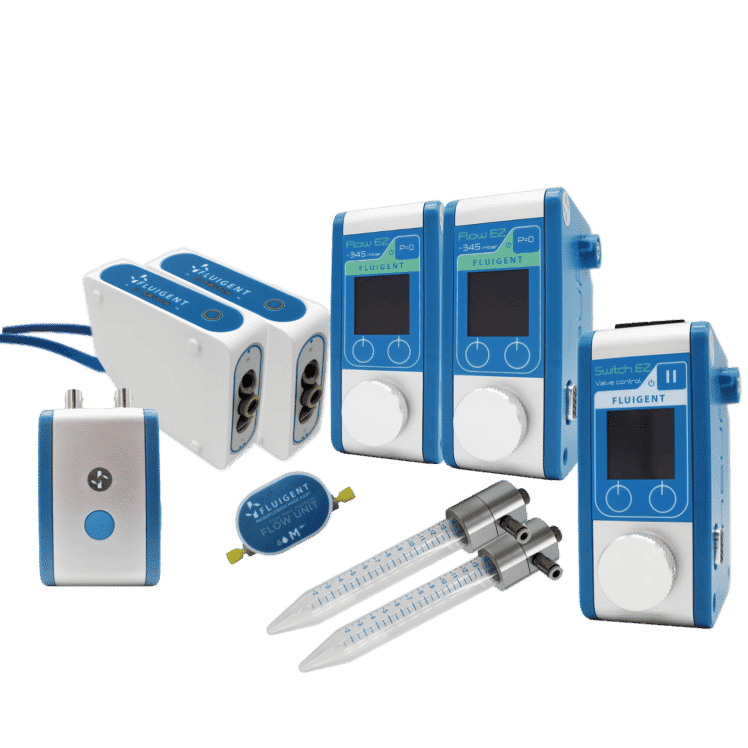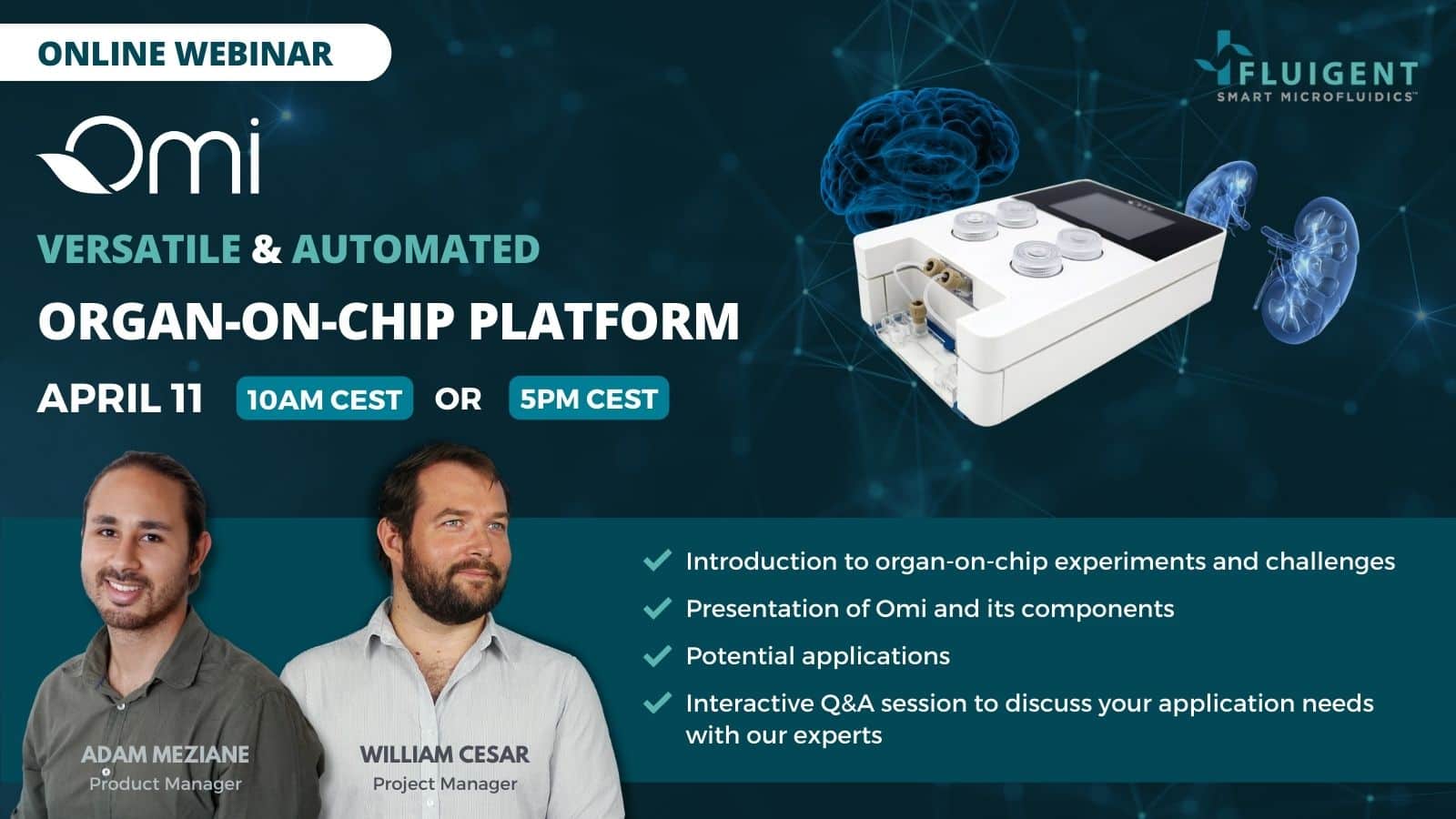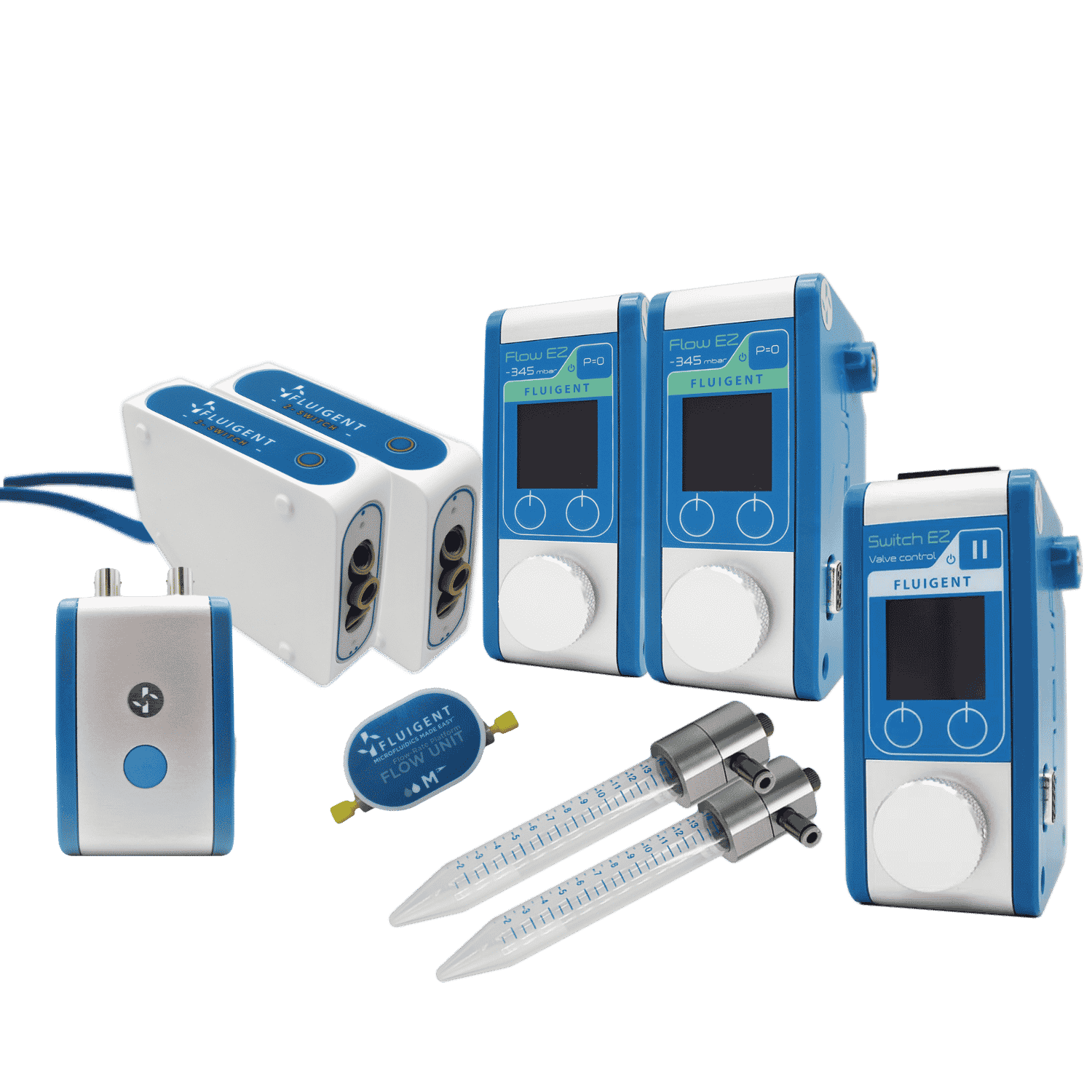Long-term fluid recirculation system for Organ-on-a-Chip applications
In this technical note, we introduce a cutting-edge automated platform for the long-term recirculation of fluid dedicated to Organ-on-a-Chip studies. Unlike traditional technologies like peristaltic and syringe pumps, our pressure-based pumps provide highly accurate and stable flow ideal for experiments involving shear stress. This will allow for the reproduction of relevant physiological conditions, providing more in-depth insight into what is happening in-vivo. Read our technical note for more details.
Why perform recirculation for Organ-on-a-Chip studies?
Organ-on-a-chip technology requires stable fluid perfusion to mimic physiological conditions resembling those in-vivo (1). Long-term recirculation of the medium through a microfluidic chip offers several benefits, including simulating relevant biological dynamics, studying enriched fluid with cell secretion factors, and enabling long-term experiments while supplying the environment with nutrients and oxygen. Different technologies (2) can be used for medium recirculation, including gravity-driven flow, syringe pumps, and peristaltic pumps, which present some limitations in terms of volume, low accuracy of flow rates, low responsiveness, etc.
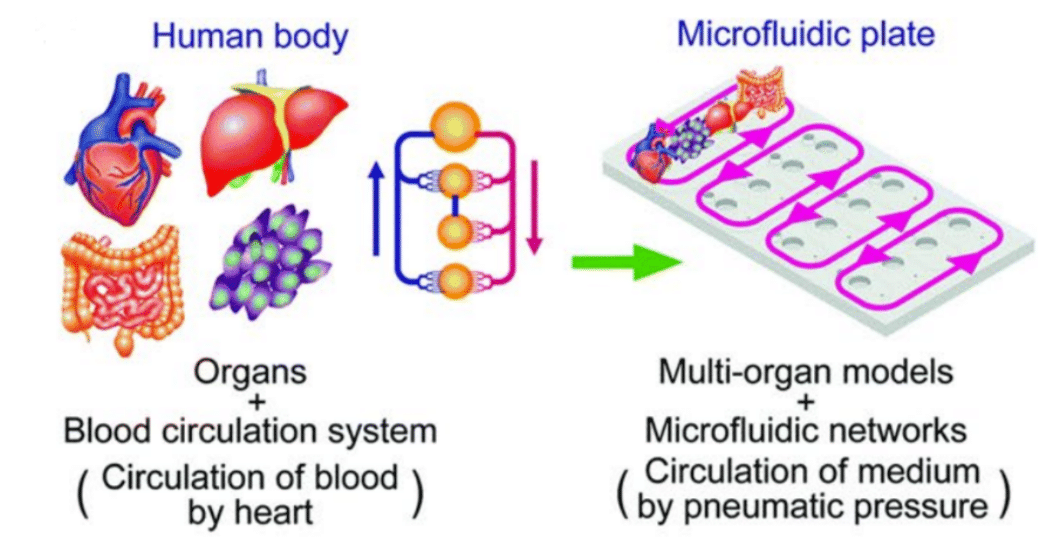
Figure 1: From living organs to organs-on-chip (1).
Omi: Fluigent’s recirculation system
Our pressure pumps technology provides accurate and stable flow profiles, making it ideal for long-term cell culture under controlled shear stress conditions.
Designed with advanced technology, the user-friendly device provides highly accurate data for Organ-on-a-Chip researchers.
Omi is equipped with:
- Fluidic paths allowing for simple perfusion or fluid recirculation along with check valves preventing backflow.
- Liquid level sensors indicating when the reservoirs need to be refilled.
- Sterile cartridges with interconnection and locking technology
Omi organ-on-chip platform is a smart device that can be controlled manually or remotely, with data stored on the cloud.
Fluigent’s Omi is designed specifically for OOAC applications enabling medium recirculation for long-term cell culture under flow.
Easy setup & protocol editing using Omi
Materials & methods
In this technical note, we analysed Omi’s ability to maintain a long-term recirculation cycle.
We used Omi recirculation system along with the Be-flow microfluidic chip from Beonchip to recirculate distilled water over a 14-day period. Various flow rates were applied (5, 10 and 50 µL/min).
We used Omi software via the included tablet to build our automated protocol, including calibration, sterilization, loading, and recirculation.
Results: Omi recirculation platform: High flow rate accuracy & responsiveness
Cycles of fluid recirculation can be monitored using tablet software or the web interface. As shown in the figure below, values of flow rate and pressure rate are measured over time, herein over a small section only to have a better view of the graph.
Figure 3 shows 2 recirculation cycles at a very stable flow rate (50 µL/min) in orange and an autoregulated pressure rate in purple. Between these 2 cycles, there is a refill step during which the flow rate drops to 0 to allow the fluid to pass from one reservoir to the other.
Conclusion
Omi is Fluigent’s newest contribution to the Organ-on-a-Chip research field. It enables the long-term recirculation of fluid with high flow rate accuracy and responsiveness, along with real-time monitoring of experiments.
Omi is an automated organ-on-a-chip recirculation system ideal for in-vitro cell culture under biologically relevant shear stresses. It can perform different protocols based on your experimental needs, such as: perfusion, recirculation, dosing, or sampling. It’s suitable for testing different kinds of drugs, toxins, and metabolites.
References
- Wu, Q.; Liu, J.; Wang, X.; Feng, L.; Wu, J.; Zhu, X.; Wen, W.; Gong, X. Organ-on-a-chip: Recent breakthroughs and future prospects. Biomed. Eng. Online 2020, 19, 9.
- Byun, C.K.; Abi-Samra, K.; Cho, Y.K.; Takayama, S. Pumps for microfluidic cell culture. Electrophoresis 2014, 35, 245–257.
Related Expertise
-
Microfluidics Case Studies A microfluidic Artery-on-a-Chip using Fluigent’s Microfluidic Flow Control System, the MFCS Read more
-
Microfluidics Case Studies Creating a Microfluidic Cancer-on-Chip Platform using Fluigent’s High Throughput Cell Perfusion Pack Read more
-
Microfluidic Application Notes Automating Neuronal Cell Immunofluorescence in Microfluidic Chips Read more
-
Microfluidics Case Studies CNRS/UTC: study of a liver-on-a-chip model Read more
-
Microfluidics White Papers A review of Organ on Chip Technology – A White Paper Read more
-
Microfluidic Application Notes Peristaltic Pump vs Pressure-Based Microfluidic Flow Control for Organ on Chip applications Read more
-
Microfluidic Application Notes Cartilage-on-a-chip, an example of complex mechanical stimulation using Fluigent’s technology Read more
